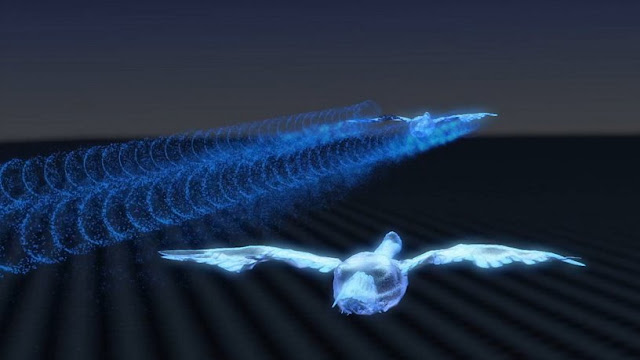 |
| A fabulous sight - a skein of migrating wild geese in familiar V formation |
But they can provide lessons, too - as confirmed this week by multinational manufacturer Airbus.
The corporation says the V-shape flight of migrating skeins provides important clues on fuel-saving benefits.
Says a press release: "Migrating geese fly in a V shape to save energy and benefit from the 'air upwash' of the leader.
"For commercial aircraft, this flight technique - inspired by nature -represents a significant opportunity to help airlines to reduce fuel consumption and CO2 emissions.
The statement continues: "When a leader-goose takes pole position, the others spread out laterally behind it.
"This flight technique helps geese to save energy.
"Scientists now understand that flying in a V shape is actually a lot more impressive than anyone had imagined.
"When a bird flaps its wings, air flows over the wings and swirls upwards behind the wingtips.
"This flow creates a wake, which is a swirling movement of air containing kinetic energy.
"When the energetic core of the wake drags surrounding air, it creates smooth currents known as “upwash,” or air that moves upwards.
"When another bird enters the upwash, it immediately benefits from free lift, which enables it to stay aloft and expend a lot less energy.
"The advantages of “wake-energy retrieval” - the technical term for flying in upwash - has long been known about.
"Given the aviation industry’s commitment to reduce aircraft emissions, Airbus is taking a fresh look at how this flight technique could provide aircraft with free lift, enabling them to reduce engine thrust and fuel consumption."
At a later date, the company hopes to provide more details about how this knowledge can be applied to practical advantage.
 |
| Spirals of kinetic energy are generated by the flapping of the wings |

No comments:
Post a Comment